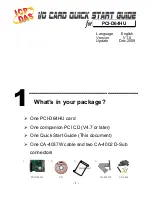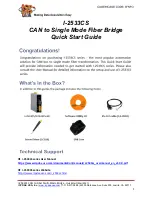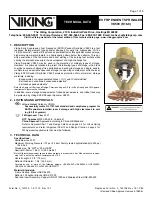
12
1. Consider work area environment. Do not expose
tools to rain. Do not usetools in damp or
wet locations: Keep work area clean and well lit.
Do not usetools in the present of flammable liquids
or gases.
2. Guard against electric shock. Avoid body contact
with earthed or grounded surfaces.
3. Keep children away. Do not let visitors touch the
tools or extension cord. All visitors should be kept
away from work area.
4. Store idle tools. When not in use, tool should be
stored in a dry locked up place, out of reach of
children.
5. Do not force the tool. It will do the job better and
safer at the rate for which it was intended.
6. Stay alert. Watch out what you are doing:Use
common sense. Do not operate tool when you are
tired. Check damaged parts. Before further use of
the tool, a guard or other part is damaged should
be carefully checked to determine that it will
operate properly and perform its intended
function.
7. Check for alignment of moving parts, blinding of
moving parts, breakage of parts, mounting
and any other condition that may affect its
operation.
8. A guard or other parts that is damaged should
be properly repaired or replaced by an
authorized service center unless otherwise
indicated in this instruction manual. Have
defective switches replaced by an authorized
service center. Do not use tool if switch does not
turn it on.
9. To ensure the designed operational integrity of
power tools, do not remove installed cover
or screws.
10. Use your tool at lower input than specified on the
nameplate, otherwise, the finish may be spoiled
and working efficiency reduced by motor
overload.
11. Do not wipe plastic parts with solvent. Solvents
such as gasoline, thinner, benzene, carbon
tetrachloride, alcohol, ammonia and oil
containing chloric annex may damage
and crack plastic parts. Do not wipe them
with such solvent. Wipe plastic parts with a
soft cloth lightly dampened with soap water.
12. Dress properly. Do not wear loose clothing or
jewelry. Contain long hair keep your hair,
clothing, and gloves away from moving parts.
13. Use safety equipment. Always wear eye
protection, non-skid safety shoes, hard hat, or
hearing protection.
14. Do not overreach. Proper footing and balance
enables better control of the tool in unexpected
situations.
1. Disconnect battery pack from tool or place the
main switch in the locked or off position before
making any adjustments, changing accessories,
or storing the tool. Such preventative safety
measures reduce the risk of starting the tool
accidentally.
2. Remove adjusting keys or wenches before turning
the tool on . A wrench or a key that is left attached
to a rotating part of the tool may result in personal
injury.
3. Use clamps or other practical way to secure and
support the work piece to a stable platform.
Holding the work by hand or against your body is
unstable and may lead to a loss of control.
4. Maintain tools with care. Keep cutting tools sharp
and clean. Properly maintained tools, with
sharp cutting edges are less likely to bind
and are easier to control.
5. Use only accessories that are recommended by
the manufacturer for your model. Accessories that
may be suitable for one tool
GB
OPERATIONAL
PRECAUTIONS
GENERAL SAFETY
INSTRUCTIONS
PRODUCT SAFETY INSTRUCTIONS
Содержание 07005701
Страница 2: ...2 3 11 11 16 GB ES...
Страница 11: ...11 DESPIECE NUMERADO...
Страница 17: ...NOTAS 17...
Страница 18: ...NOTAS 18...
Страница 19: ...NOTAS 19...






































